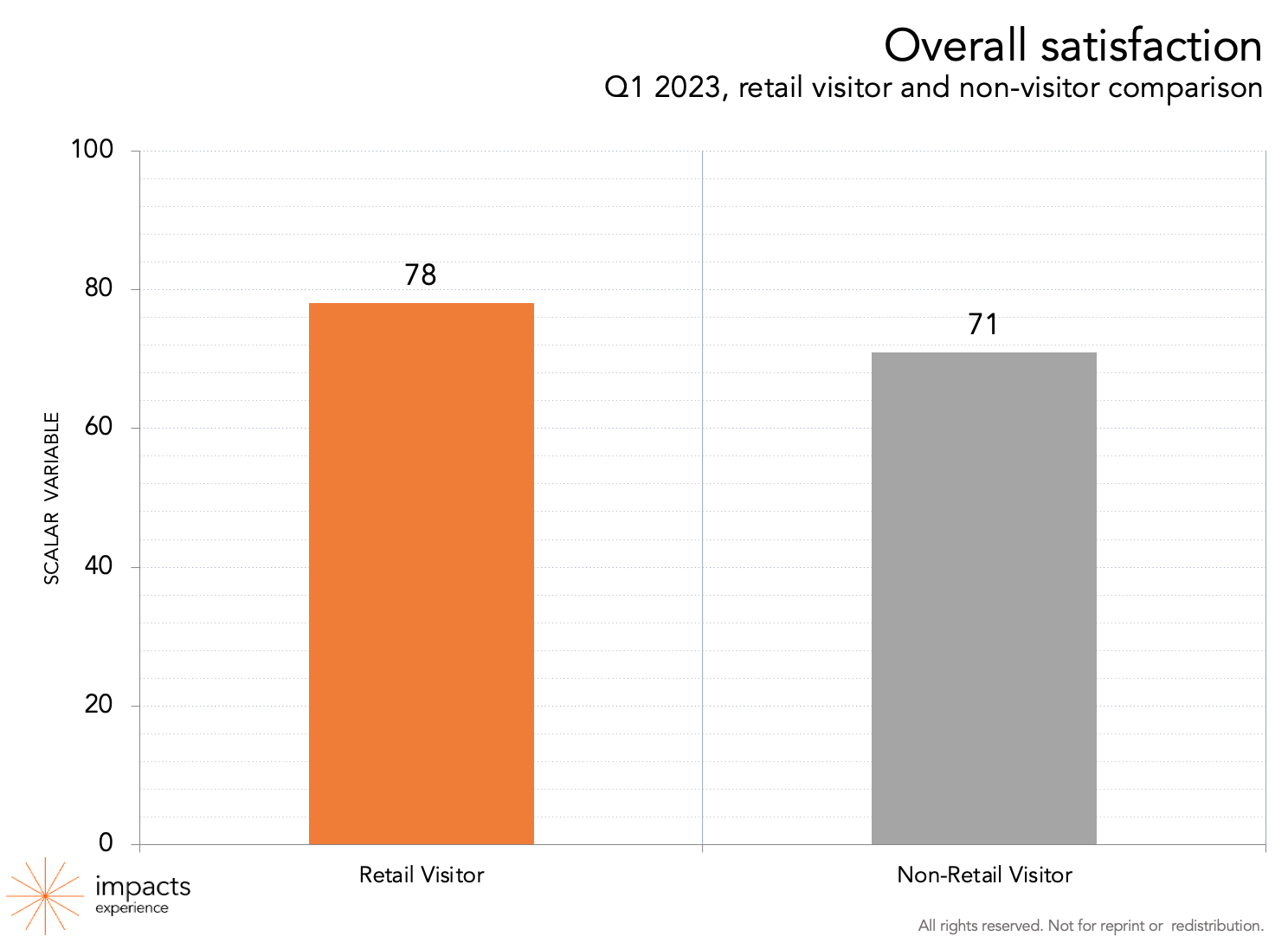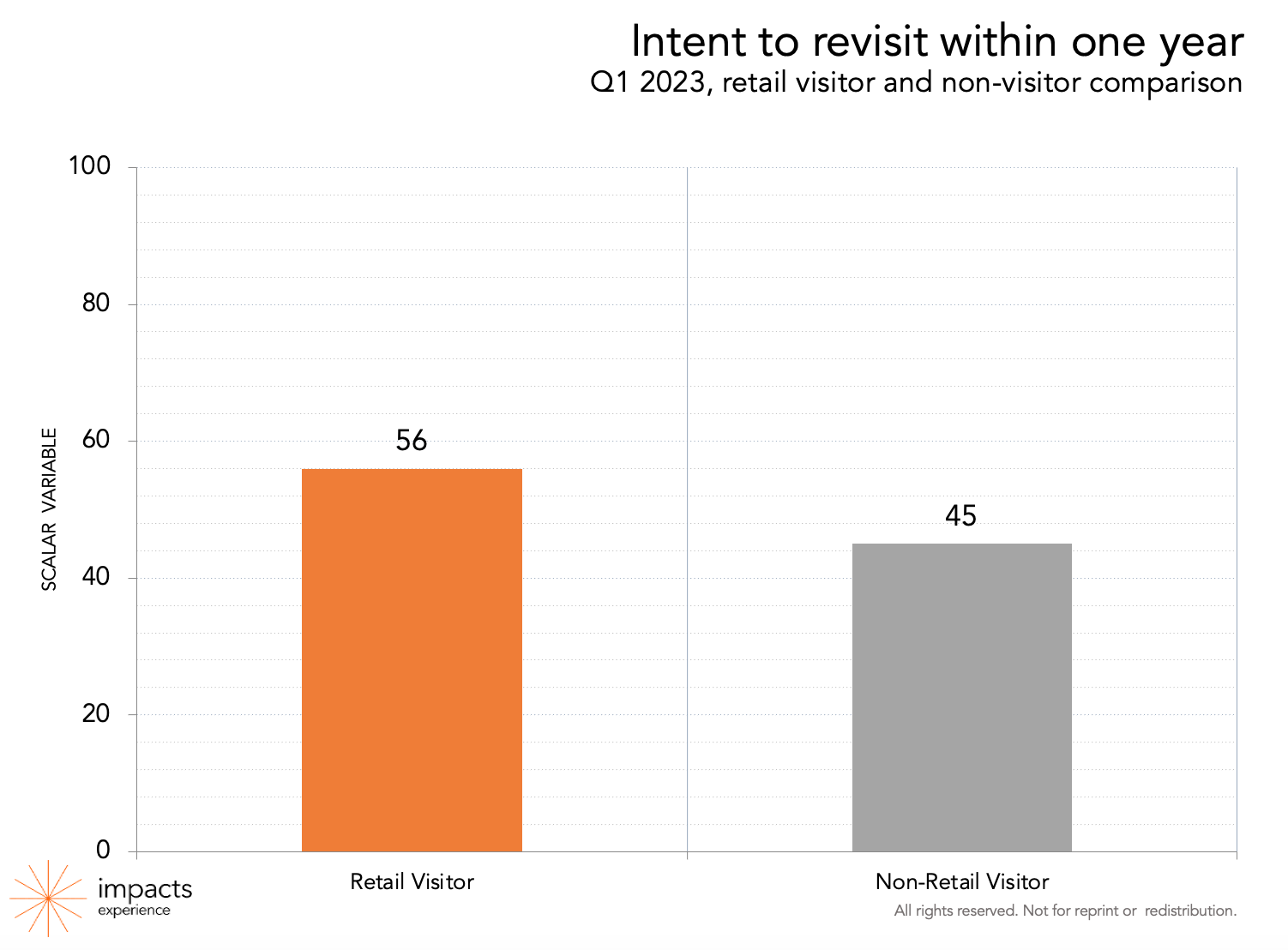
Welcome, MSA readers! For full access to Know Your Own Bone as well as new data and analysis every other week, please explore our subscription options here.
A museum’s retail shop can have a much bigger impact on guest satisfaction than leaders may realize. Here’s the data.
Last week, I had the great pleasure of keynoting the Museum Store Association’s MSA Forward conference in Denver. The theme of the keynote was how retail experiences can underscore cultural organizations’ missions.
The research is clear: These experiences can play a meaningful role in reinforcing the uniqueness of both an organization’s mission and the individuals who support it; they can help attract, renew, and retain members; and they can help commemorate and reinforce positive memories made during a visit.
But today I want to share something particularly interesting about the role that retail shops can play in guest satisfaction and, ultimately, a cultural organization’s financial health and sustainability.
The retail experience itself makes up 3% of total guest satisfaction, but influences several other perception areas. (Don’t stop reading here.)
When we consider guest satisfaction as a composite metric (a single metric informed by multiple weighted components based upon how visitors consider each factor), the retail experience by itself comprises 3.12% of overall satisfaction when one attends a cultural organization. However, it’s a bad idea to think of the retail experience as divorced from the overall cultural organization experience. While retail operations certainly have their own influence, they can also play into several other factors influencing guest satisfaction including entertainment experience (the largest factor at 20.84%) and employee courtesy (10.59%).
Even so, why does the retail experience comprise only 3% of overall satisfaction? In part, it’s simply because not everyone enters the retail store. According to the National Awareness, Attitudes, and Usage Study, 26.7% of recent guests to exhibit-based cultural organizations in the United States entered a retail shop. As a result, fewer people weigh in on the retail experience than, say, admission value. Thus, its contribution to overall satisfaction is correspondingly lower.
But consider some facts about the people who do visit a retail shop…
People who visit the retail store have notably higher satisfaction and are more likely to revisit the organization.
Of the 26.7% of recent visitors who went into a retail store, a whopping 81.9% say it positively contributed to their onsite experience. That’s an exciting finding for not only retail experiences but for cultural organizations at large! This means that retail operations are elevating the onsite experience, which can contribute to positive endorsements, repeat visitation, and even membership growth.
The chart below is shown in scalar variable. In scalar variable charts from IMPACTS Experience, an increase of even one point is statistically significant. We know that people who enter the retail shop have generally higher guest satisfaction than people who do not – and by large measure!
Overall satisfaction is a critical performance metric for an organization’s financial health. The higher the overall satisfaction rating, the more likely people are to act in the interests of the organization, visit, support its mission, and a host of other data-informed benefits.
We also know that people who visit a museum’s retail store are significantly more likely to make a return visit. Specifically, they have greater intent to return within one year compared to people who visited the same organizations but did not go into the retail store.
A positive retail experience can otherwise save a negative visit to a cultural organization.
Is it that people who are having a better experience are more likely to go into the retail store, or is it that people who aren’t having a great experience have a better one after visiting the store? We’re not sure. But we’re also not sure that it matters.
If people who are having better experiences are more likely to go into the store (to experience one of the best parts of visiting a museum retail shop), then that’s fantastic. They are further heightening their experience and paving the way for positive endorsements – which are key for motivating attendance. Alternately, if someone isn’t having a good experience and they enter the shop and have a better experience as a result, that’s fantastic as well. Even a medium-rated trip to the museum can be elevated, and that visitor leaves with a higher likelihood of positive endorsement and repeat attendance as well.
Retail experiences leverage the peak-end rule – a cognitive bias impacting how we remember events and experiences.
At IMPACTS Experience, we talk a lot about understanding cognitive biases and the roles they play in how people make decisions. But cognitive biases also impact how we remember things. The peak-end rule is a great example of this.
This bias was studied by behavioral economist Daniel Kahneman (one of our favorites). He explained that “our memory of past experiences (pleasant or unpleasant) does not correspond to an average level of positive or negative feelings but to the most extreme point and the end of the episode.” Kahneman conducted interesting experiments involving situations ranging from buckets of ice water to colonoscopies. He discovered that humans don’t often remember much of an experience accurately. Instead, we primarily remember how we felt at the peak of the experience, and at the end of it.
Organizations with well-executed retail experiences may be grateful for the peak-end rule, as it means people who visit the shop before leaving the museum have a greater likelihood of departing with a more positive view of their entire visit. (Those with difficult parking situations, on the other hand, may be less enthused about the peak-end rule…)
Retail stores can provide the exclamation point to the onsite experience.
Beware the misconception that a cultural organization’s retail operations are merely places to sell stuff. The best things about a retail store visit serve the entire institution.
These spaces can help make and commemorate meaningful experiences. In this way, they can play valuable roles in supporting not only an organization’s financial health but its mission as well. They can enticing people to encourage others to visit, to return themselves, and even to become members.
In short, retail operations can be critical agents of making good into great when it comes to a visit to a cultural organization.
IMPACTS Experience provides data and expert analysis to many of the world’s leading organizations through its workshops, keynote presentations, webinars, and data services such as pricing studies, market potential analyses, concept testing, and Awareness, Attitude, and Usage studies. Learn more.
We publish new national data and analysis every other Wednesday. Don’t want to miss an update? Subscribe here to get the most recent data and analysis in your inbox.



